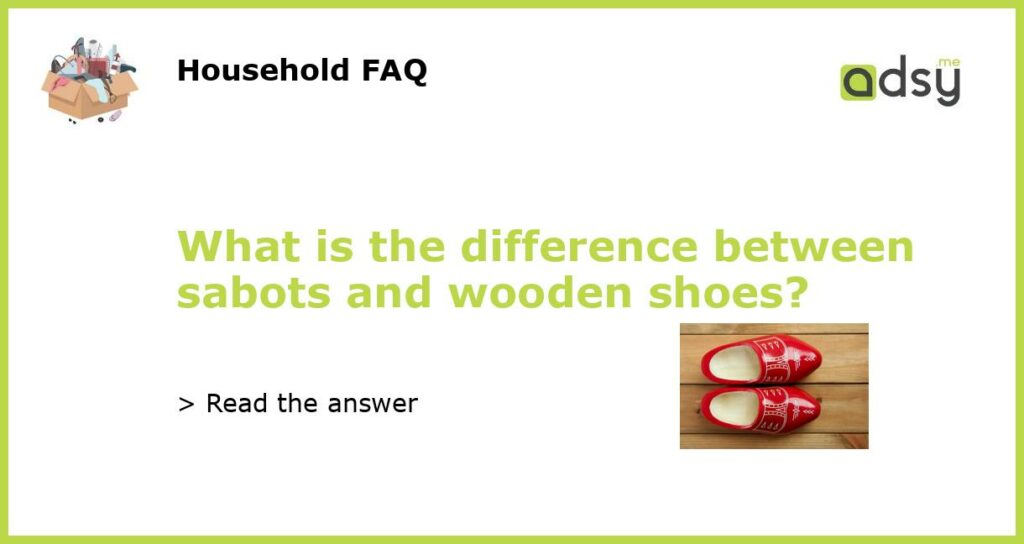What are sabots and wooden shoes?
Sabots and wooden shoes are traditional footwear made entirely out of wood. They were widely used in Europe, particularly in the Netherlands, France, and Scandinavia, in the past centuries. Even today, people wear them for farming, gardening, industrial, and fashion purposes. Sabots are single-piece wooden shoes, which do not have a closed heel, while wooden shoes do. However, many people still confuse the two shoes.
Understanding the origins of sabots and wooden shoes
Sabots were initially used by farmers and peasants in northern France during the fourteenth century. They were invented as a cheaper alternative to leather shoes, which were more expensive and challenging to maintain. The first sabots were carved out of a single piece of wood and provided adequate protection from the elements, making them suitable for agricultural work. On the other hand, wooden shoes originated in Sweden and can be traced back to the thirteenth century. The wooden shoes were invented as a result of the difficult living conditions in Sweden, where the winters are usually cold and icy.
The difference between sabots and wooden shoes
Even though both sabots and wooden shoes are carved out of wood, they are different in shape and design. Sabots are usually open-backed, while wooden shoes have a closed heel. The single-piece design of the sabots enabled easy slipping in and out of the shoes, while wooden shoes were closed at the back for better support and stability. Sabots were also narrower and lighter than wooden shoes, which were wider and heavy. Wooden shoes are usually decorated with intricate patterns, while sabots are mostly plain.
How are sabots and wooden shoes used today?
Sabots and wooden shoes are still widely used today, but their primary purposes have shifted. Farmers and gardeners wear them because they provide excellent protection against mud and dirt, while chefs and workers in the food industry wear them for hygiene purposes. They are also popular among tourists who want to try on some traditional clothing and footwear. Some fashion enthusiasts and designers have also incorporated wooden shoes and sabots in their collections.
In conclusion, while sabots and wooden shoes share some similarities, they are quite different in design and usage. They both have a long history, and even though their primary uses have changed, they are still very relevant in modern times. Whether used for farming, gardening, or as a fashion statement, sabots and wooden shoes will always be a unique and valuable part of European culture.






